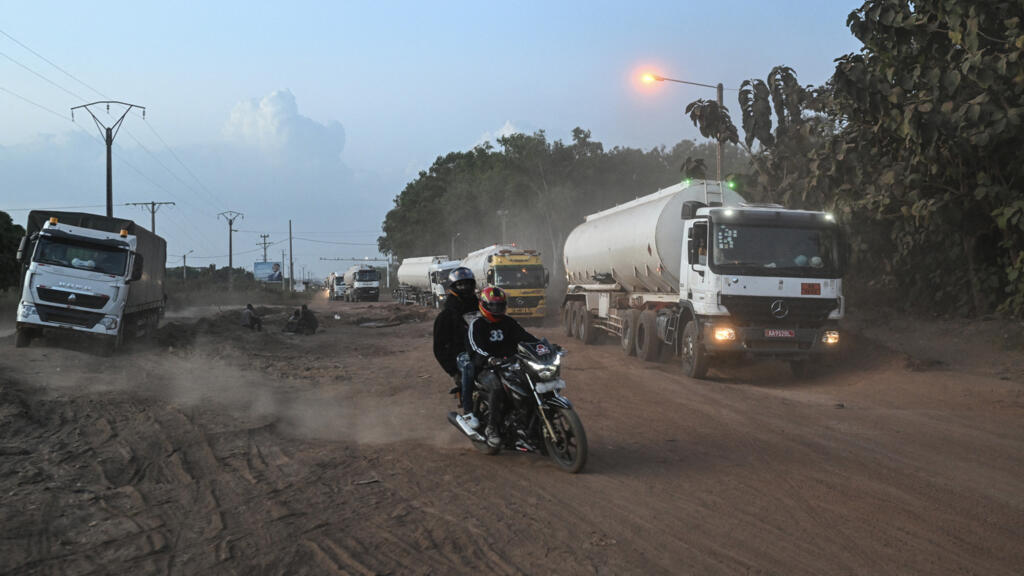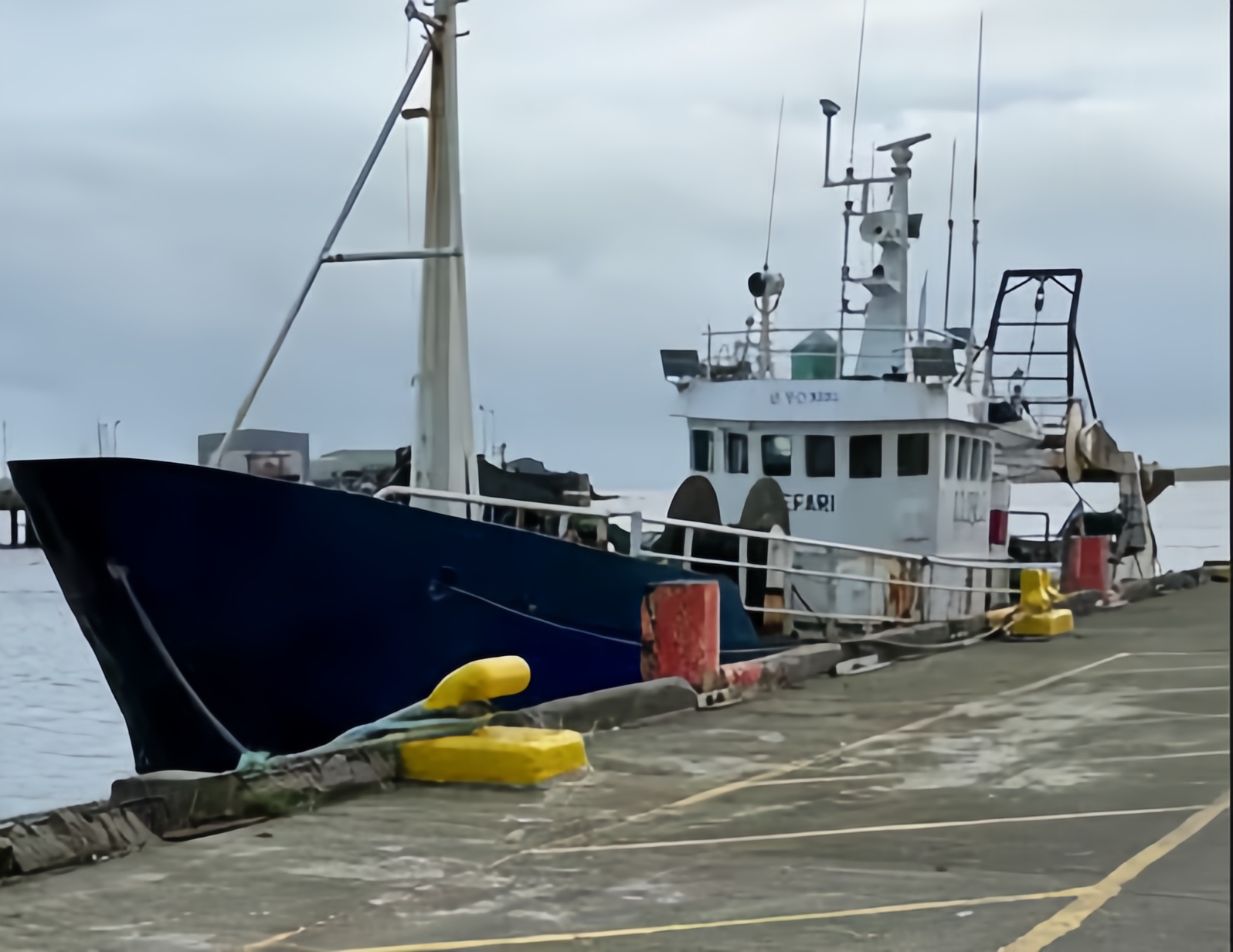Gambiaj.com – (Stornoway, Scotland) – A decades-old Icelandic trawler newly registered under the Gambian flag has been impounded in the Scottish port of Stornoway after UK marine inspectors uncovered multiple safety deficiencies, reinforcing growing concerns about the surge in aging, substandard vessels operating under Gambia’s flag.
The vessel, Sæfari—a 27.5-metre trawler built in 1988—has now spent nearly two weeks tied up at Number 3 Pier with its crew of four Ukrainian seafarers unable to continue their journey to West Africa.
Marine and Coastguard Agency (MCA) inspectors boarded the vessel shortly after its arrival on 30 October and issued health and safety notices that must be rectified before departure.
An MCA spokesperson confirmed: “Safety issues were identified that are required to be rectified before the vessel may depart.”
No public details have been released, but such notices typically involve structural integrity concerns, equipment failures, and deficiencies in crew welfare or emergency systems.
Part of a Wider Pattern: Gambian-Flagged “Shadow Fleets” Under Scrutiny
The impoundment comes amid mounting international scrutiny of “shadow fleets” operating under flags of convenience, including the Gambian flag, where older vessels, no longer compliant with strict safety and environmental standards in Europe, are sold into markets in Africa and Asia.
These fleets have increasingly been detained across European ports for violations ranging from improper documentation to serious seaworthiness and environmental breaches.
Assignments by European maritime authorities over recent years have repeatedly flagged Gambian-registered vessels as high-risk, with above-average detention rates linked to safety failures, poor maintenance, and non-compliance with international regulations governing pollution prevention.
The Sæfari’s case mirrors these concerns: a vessel nearing four decades in age, sold on from northern Europe and dispatched thousands of miles toward West Africa despite obvious operational and financial vulnerabilities.
The situation is further compounded by the crew’s reported inability to communicate effectively with authorities and their lack of funds to refuel, signs maritime analysts say often accompany vessels in poorly regulated secondary markets.
Crew Stranded, Owners Absent
Local reports indicate the Ukrainian crew arrived in Stornoway “penniless,” with the vessel’s owners showing no willingness to supply funds for refueling or repairs necessary for the onward 4,000-mile voyage to The Gambia.
The Stornoway Fishermen’s Mission has been providing assistance, though its manager, Uilleam Macleod, declined to comment.
Their predicament has raised fears that the Sæfari could be abandoned in Stornoway Harbour—an increasingly common outcome when older vessels change hands through low-cost transactions between northern European sellers and buyers in Africa.
A Trade in “Unfit” Vessels
The episode sheds light on a little-discussed maritime pipeline funneling ageing, often unseaworthy vessels from high-regulation economies to lower-regulation markets, where oversight is limited and ships are expected to continue operating far beyond their safe lifespan.
While such vessels retain commercial value in parts of West Africa’s fishing sector, their transfer often exposes crews to dangerous conditions and ports to environmental risks, including oil leaks, waste discharge, and structural failures.
As the Sæfari remains impounded, UK inspectors insist it will not be permitted to sail until the identified safety violations are fully rectified.
With the owners yet to provide financial or logistical support, the fate of the vessel and its crew remains uncertain—yet the broader message is unmistakable: Gambian-flagged vessels, especially older trawlers in long-distance transits, will face increasing detention as regulatory authorities intensify their scrutiny of the shadow fleets linking Europe and Africa.










